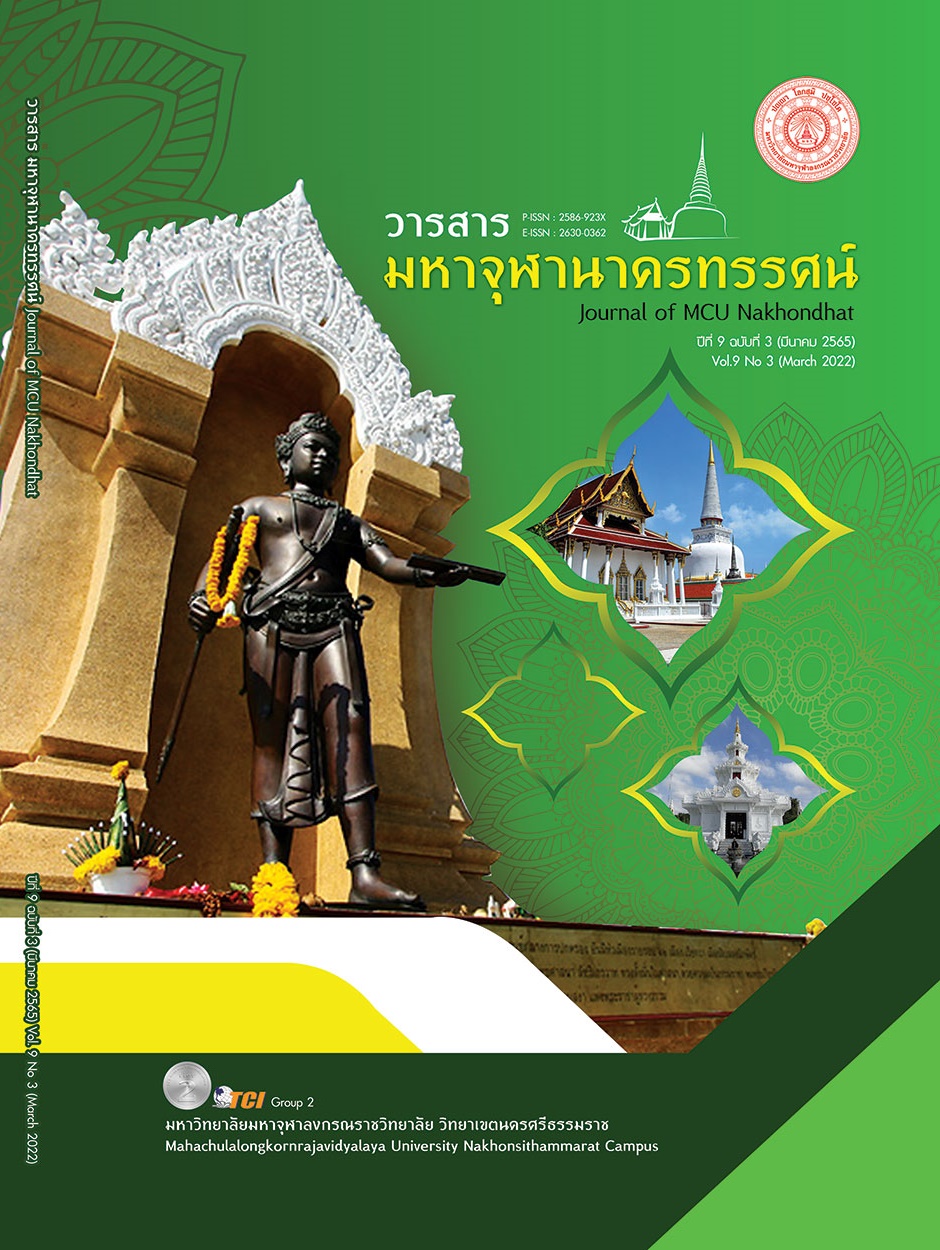TECHNOLOGY TRANSFER OF WARP ROLLING TECHNIQUE WITH NEWLY DESIGNED AND DEVELOPED INNOVATION TO COMMUNITY
Main Article Content
Abstract
The purposes of this study were to manage the body of knowledge and pass on the technology and techniques of winding the warp to the community enterprise by employing qualitative research. The samples were Ban Nong Kowit Weaving Group, Ban Phon Sawan Weaving Group, Sa Kaeo Province, Ban Khua Kai Weaving Group, and Ban Na Ngua Weaving Group, Sakon Nakhon Province, a total of 100 persons. The tools adopted in this research were interview and observation forms and the 3 procedures were: 1) to study the original warping procedures; 2) to design and develop the warp winding machine and; 3) to pass on the body of knowledge and instructions of warp winding machine. The results of a study in the woven cloth The results of a study of fabric weaving by using a stand-up yarn winding device for community enterprises were: 1) the area of warp winding was reduced from the original area consuming the area equivalent to the length of the warp, the average length of the warp ranged between 15-25 meters, whilst the new winding machine consumed the area of 4-5 meters which was more saver; 2) the time consumed was less, the winding process could be done without time limitation even if the weather conditions were poor; 3) the issue of labor required for warp winding was mitigated, the newly developed machine only required 2 persons whilst the original winding required 4-5 persons. The outcome of passing on technology illustrated that the community enterprise could perform winding the warp with newly designed and developed techniques and they could personally pass on and utilize the body of knowledge obtained. Additionally, the community enterprise could build the product brand from the products produced by the machine adopting the warp winding techniques and such products could be commercially distributed.
Article Details

This work is licensed under a Creative Commons Attribution-NonCommercial-NoDerivatives 4.0 International License.
References
กมลนัทธ์ ศรีจ้อย. (2560). การสังเคราะห์องค์ความรู้ ภูมิปัญญาผ้าทอบ้านเนินขามสู่การเรียนรู้. กรุงเทพมหานคร: สถาบันภาษา มหาวิทยาลัยธรรมศาสตร์.
ทองสุข วันแสง. (2537). การพัฒนาหลักสูตรฝึกอาชีพการทอผ้าไหมมัดหมี่. ใน วิทยานิพนธ์ปริญญาการศึกษาดุษฎีบัณฑิต สาขาการวิจัยและพัฒนาหลักสูตร. มหาวิทยาลัยศรีนครินทรวิโรฒ.
บุญดี บุญญากิจ และคณะ. (2547). การจัดการความรู้จากทฤษฎีสู่การปฏิบัติ. กรุงเทพมหานคร: สถาบันเพิ่มผลผลิตแห่งชาติ.
มนชนก อุปะทะ . (2559). การจัดการองค์ความรู้ภูมิปัญญาพื้นบ้านล้านนาประเภทผ้าทอของกลุ่มผู้ผลิตผ้าทอยกดอก ตำบลเวียงยอง อำเภอเมือง จังหวัดลำพูน. วารสาร สมาคมนักวิจัย, 21 (3), 155-166.
วัฒนะ จูฑะวิภาต. (2555). ผ้าทอกับชีวิตคนไทย. ใน รายงานการวิจัย. มหาวิทยาลัยธุรกิจบัณฑิตย์.
สถาบันสิ่งทอแห่งประเทศไทย. (2564). อุตสาหกรรมสิ่งทอและเศรษฐกิจ BCG. เรียกใช้เมื่อ 25 พฤษภาคม 2564 จาก https://www.thaitextile.org/th/insign /detail.2487.1 .0.html
สนั่น บุญลา. (2553). ความรู้เกี่ยวกับผ้าทอ. (พิมพ์ครั้งที่ 1). กรุงเทพมหานคร : วิสต้า อินเตอร์ปริ้นท์.
สนั่น บุญลา. (2561). การทอผ้าแบบหัตถกรรม. กรุงเทพมหานคร : บีเคเค บริษัท อาร์ต แอนด์ พริ้นติ้ง จำกัด.
สุจริต บัวพิมพ์. (2545). ผ้าไทย ใยแห่งปัญญา คุณค่าเศรษฐกิจไทย. กรุงเทพมหานคร: กรมส่งเสริมวัฒนธรรม กระทรวงศึกษาธิการ.
สุพินยา อุปลกะลิน. (2558). เมื่อนาโนเทคโนโลยีมีบทบาทกับผ้าทอพื้นเมือง. เรียกใช้เมื่อ 14 มิถุนายน 2561 จาก http://horizon.sti.or.th/node/14


